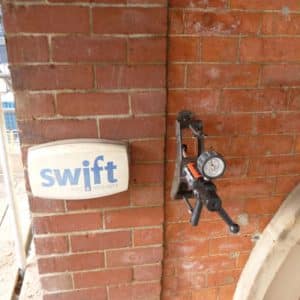Woodworm Signs and Symptoms
What are the signs of woodworm?
The signs of woodworm depend on the actual type of infestation, as woodworm is used as a ‘catch-all’ term for a variety of different wood boring insects. Most species have a lifecycle of approximately 5 years, and will spend every day of that time munching on whatever damp and accommodating wood they can find!
Among the types of woodworm, we have:
- Common Furniture Beetle (Anobium punctatum) – the most widespread of them all
- Death Watch Beetle (Xestobium rufovillosum)
- House Longhorn Beetle (Hylotrupes bajulus)
- Powder Post Beetle (Lyctus brunneus)
- Bark Borer Beetle (Ernobius mollis)
Also in this section

Signs of woodworm vary from the obvious to those only apparent to the trained eye and through deeper investigation, but they include:
- Small holes in your woodwork and internal and structural timber
- Wood tunnels
- Powdery wood dust surrounding the holes
- Crumbling wood
- Live beetles – most often seen through summer and early autumn
- Dead beetles
- Eggs and larvae
The most common woodworm is the common furniture beetle, which shuns exotic woods, and instead prefers to make its home in softwoods and European hardwoods, such as oak, elm and spruces – materials that are often used for flooring and roof timbers in houses around Yorkshire and the UK.

Need advice or want to book a survey?
Woodworm – Problems and solutions
Problems caused by woodworm range in extent and severity, depending on the type of infestation you’re experiencing.
In some cases, problems can be controlled by treating the affected area, and that will put the brakes on any ongoing or growing issues, but in the worst case scenario, timbers can be weakened and damaged so badly that the structural integrity of the building is severely compromised.
The difficulty is that it’s not always clear just how bad the problem is from a quick visual inspection, which is why you need to call in a qualified surveyor if you suspect you may have these unwanted visitors.









